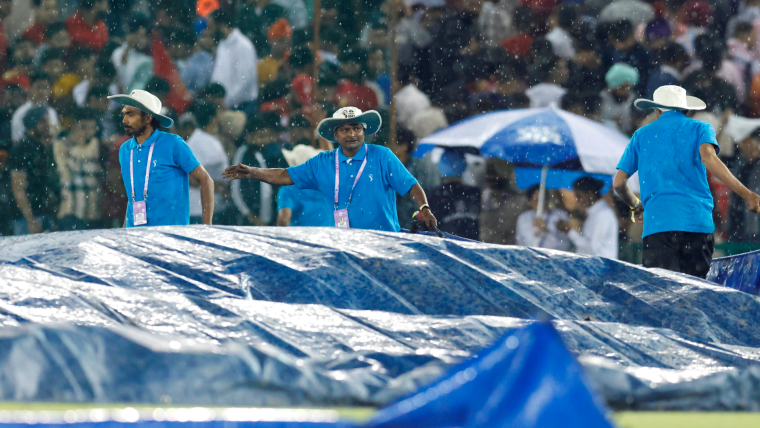Cricket World Cup 2023: What is the Duckworth-Lewis-Stern Method?
The upcoming Cricket World Cup 2023 in India is generating immense excitement among fans, who anticipate a thrilling tournament. However, as we all know in cricket, the weather doesn’t always cooperate. The recently concluded Asia Cup 2023 and IPL final both faced challenges due to rain, leading to delays, postponements, and shortened matches.
Although the 2023 ODI World Cup does not predict significant rainfall in India, the organizers have taken precautions to handle any unpredictable weather conditions. In the event of rain, the Duckworth-Lewis-Stern (DLS) method will be implemented to determine match outcomes. Now let’s dive into what exactly the DLS method is and how it works.
DLS Method in Cricket: A Fair Way to Adjust Target Scores
The DLS method is a mathematical formula used in cricket to adjust the target score for the team batting second in a limited-overs match affected rain or interruptions. It provides a fair and equitable way to determine target scores taking into account the overs lost due to weather conditions.
What Does DLS Stand For?
DLS stands for “Duckworth-Lewis-Stern” method. It is named after its creators, statisticians Frank Duckworth and Tony Lewis. Initially introduced as the DL method in 1997, it was later renamed DLS, following a modification in time for the 2015 World Cup that included inputs from professor Steve Stern.
How Does the DLS Method Work?
The inspiration behind the DLS method stems from the 1992 World Cup semi-final match between England and South Africa, where rain caused a 12-minute halt in play. When the game resumed, the revised target score, based on the ‘Most Productive Overs’ ruling, forced South Africa to chase 21 runs from one ball – an unfair reduction of only one run compared to the loss of two complete overs.
To address such discrepancies, the DLS method was designed to make the impact of weather interruptions fairer. It operates through a complex mathematical formula that adjusts the target score downward based on the number of overs lost due to rain or similar interruptions. The method also considers the resources available to both teams and calculates the revised target accordingly.
Ultimately, the DLS method provides a simplified version of the original run chase for the team batting second, offering them a fairer chance of success.
Rain-affected Matches in Cricket World Cup 2023
In the event of rainfall during a Cricket World Cup 2023 match, the umpires will determine whether or not to apply the DLS method. This decision will depend on various factors such as the duration and intensity of the rain, as well as the possibility of resuming play.
During the league-stage matches, no designated reserve days are available. If a match becomes unplayable due to weather or other reasons, both teams will be awarded a point each, and the match will be declared a “No Result.”
However, the rules differ for the semi-finals and finals. Reserve days are scheduled for these crucial knockout matches. If play is interrupted rain during a semi-final or the final, the game will resume on the next scheduled day from the exact point it left off.
In conclusion, the DLS method ensures fair play in rain-affected matches during the Cricket World Cup 2023. Fans can be assured that even in the face of inclement weather, the tournament’s outcomes will be determined through a just and transparent process.
Sources:
– Cricket World Cup 2023 full fixtures, schedule, and results
– Bet here on the Cricket World Cup 2023 matches (selected territories)
– How many overs are played in the ODI World Cup?
– Read West Indies legend Chris Gayle’s exclusive predictions on the 2023 Cricket World Cup
– Predict the CWC 2023 matches here and win the latest Apple gadgets and big cash prizes (India only)

